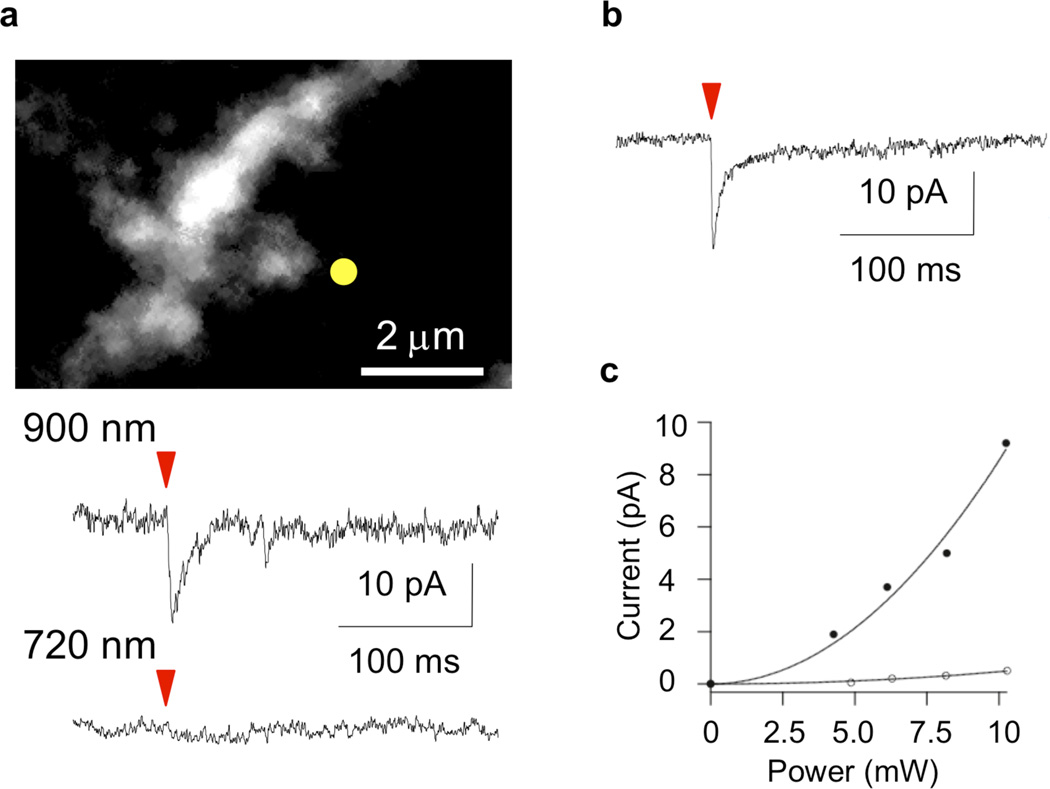Figure 2.
Optically selective two-photon uncaging of glutamate at 900 nm. Caged neurotransmitters were topically applied to pyramidal cells through a puffer pipette positioned just above the surface of an acutely isolated mouse brain slice. Excitation was with a mode-locked Ti:sapphire laser tuned to the specified wavelength. Power was measured at the exit of the microscope objective. Currents were measured at the cell soma using whole-cell voltage-clamp recordings. (a) Two-photon fluorescence image of dendritic segment on a pyramidal neuron filled with Alexa-594 (top panel). DEAC450-Glu, applied at 0.25 mM, was irradiated with 900 nm or 720 nm light for a period 0.5 ms. The photolysis beam was positioned (yellow dot) next to a spine head and the postsynaptic current induced by 10 mW at 900 nm was similar to that evoked by synaptic release. Irradiation at the same position with 12 mW of 720-nm light evoked no current. (b) MNI-Glu, applied at 10 mM, was irradiated with 720 nm light for a period of 0.5 ms and evoked a postsynaptic current that was to similar synaptic release. Importantly, nitroindolinyl-caged glutamate is 38-fold less two-photon active at 830 nm28. (c) Powerdosage curve of evoked postsynaptic current showed a two-photon excitation effect for the postsynaptic current for DEAC450-Glu at 900 nm (solid points). A much weaker response was evoked at 720 nm (open circles).

